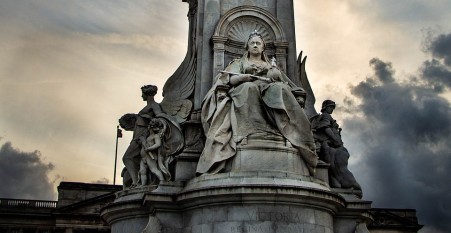
On Seeing England for the First Time is an autobiographical essay by Jamaica Kincaid in which she presents her stance on the position England holds in her and as an individual who has experienced colonialism closely in her Caribbean hometown. She is preoccupied with the colonial enterprise and its façade, postcolonial dilemmas pertaining to identity and home, the imperial internalizing ideologies as propagated by the biased education system, and the double oppression of women due to racial segregation. In the essay, she exposes the difference between the idea of England and reality where “the space between the idea of something and its reality…is always wide and deep and dark.” All her young life, she has been fed with the idea of England as the land of majesty and customs. But her visit to the country in her adulthood alters that idea as she encounters the country’s real people and real practices. Her words resonate with each individual who has been a victim of colonization and an advocate of decolonization.
Jamaica Kincaid is an Antiguan novelist and essayist who published her autobiographical essay “On Seeing England for the First Time” in the magazine Transition in 1991.
On Seeing England for the First Time | Summary
The essay opens with Kincaid establishing a philosophical difference between idea and reality and in her case it is the imperial project of promoting the colonizer’s culture and suppressing the colonies that put the difference in action. The clash between her physical encounter with England in her adulthood and the ideological encounter during her formative years reveals that difference which she keenly focuses on in this essay. A journey from her school days then follows where she sees England for the first time in school on a map and she compares it to a leg of mutton, contrasting the jewel status it adores and carries off. But this jewel is affordable to the English and in effect is given to them only even though the country travels around the world to enforce the message of equality and better opportunities. The Caribbean schools condition their students to think of England as a holy and mystical place possessing the fountain of knowledge. Kincaid further resents the materiality that England symbolizes as everything she uses, eats, and even wears is a product “Made in England,” except for the natural elements which the English luckily couldn’t rule over. Even her parents encourage her to naturalize the English lifestyle by incorporating culinary habits of using a fork and knife rather than hands.
The map of England holds center stage in the essay as she fails to draw a clear imitation of the same despite a force of familiarisation every day. However, she realizes the implicit power and meaning her inability to draw England’s map correctly carries as she grows up. England’s history occupies her memory, blurring her own native ties, and generations of men in her family are named Alfred after the king, who she humorously points out, has none of them ever met. Literature through poetry proposes a rosy understanding of English life but she compares it to the life she, as a matter of fact, really lives where the walks are not “pleasure” but “an act of labor, a burden, something only death or the automobile could relieve.” For England and the English, the world belongs to them and all its best is theirs while she continues to live a life without any privileges and banal pretense and enforced lifestyle.
After recollecting her young days, she finally moves to the phase when she is able to visit England after the availability of resources required for the journey. But the gap between the physical reality and the thought fills her heart “with hatred” and as a result, when she steps her foot on the land, she wants to take it into her hands and” tear it into little pieces and then crumble it up as if it…is] clay, child’s clay.” The essay ends with the author craving for the power to give back the same treatment and humiliation to the white folks as they have given to her and other people of color all around the globe.
On Seeing England for the First Time | Analysis
Kincaid’s personal experience of England has been operated by both- the Ideological and the Repressive State Apparatuses, to borrow from Marxist theorist Louis Althusser. She adopts a confronting and reflective tone throughout the essay showcasing her resentment and sarcastic attitude to the English practices and England’s domination over its colonies. The colonial regime was nothing but a façade to belittle other communities and ethnicities in order to take the whole world under. It is a straightforward account of everyday observances that Kincaid as a child in the earlier sections and later as an adult jots down. She puts a thrust on the gradual building up of the internalization of the inferiority complex colonized population underwent and as a result lost their essential identity to the not-so-deserving white dominance.
Following are some of the arguments she puts forward in her work:
On Seeing England for the First Time by Jamaica Kincaid | Key Arguments
Kincaid believes colonization to be a dark shadow that has always and to some extent still looms over the mindsets of the colonized from which an easy escape is a far-fetched notion. Caribbean men and women spend their entire lives getting accustomed to a new culture that only has injustice, racial discrimination, and infantilization in store. Even the education system holds no significance and correlation to their actual life and origins. Why should the people of color hold an interest in the white history comprising of kings and battles their forefathers were not a part of? Such education removes all the passages that could connect one to his/her native identity. The Christian missionaries brought the English culture through religion to promote equality and easy assimilation. But England and all its prosperity belong to English only. She resents the internalization of colonialism by substantiating her father’s attitude towards it— “ And this hat-a brown felt hat-became so central to his character that it was the first thing he put on in the morning as he stepped out of bed and the last thing he took off before he stepped back into bed at night.” English not only conquered the territories but its people too both in flesh and thought without a war.
The sheer luxury England dips into every day at the expense of the loot from its colonies is satirically remarked through its “decorating rooms so large twenty families the size of mine could fit in comfortably but…[it is] used only for passing through.” The display of richness like that ironically lacks a utilitarian purpose. Further, she claims the hollowness in identity as a consequence of imperialism, leaving her with “nothing…that was the word for everything about me, nothing.” While her dislike and contempt for the nation are valid on many levels, she also reveals how even the English themselves do not like England but cannot bear someone else’s hatred towards their country. Her main concern revolves around the self-claimed authority of the whites to deprive people like her of their identity, culture, and nativity and she ends the essay by affirming the dichotomy between an idea and its reality.
On Seeing England for the First Time | Supporting Statements
When Kincaid addressed England as a jewel, she mocked the nation’s extravagant display of wealth and power through its colonial enterprise’s invading practices —
“They wore it well and they wore it everywhere: in jungles, in deserts, on plains, on top of the highest mountains, on all the oceans, on all the seas, in places where they were not welcome, in places they should not have been.”
Like a parasite, they lived off their host and sucked everything out that belonged to them. The emptiness left behind was filled by the colonizer’s culture which led to an urge of copying them in the colonized mentality, reflected through the tradition of wearing hats. It was an English custom and the author’s father followed it rigorously because he was charmed by it even though it failed to serve the purpose of providing any shade from the hot sun. While her parents could not stick to their native roots, she as a child was well aware of her preferences. She didn’t fancy England as her parents did and “knew then that…[she] enjoyed…[her] food more when…[she] ate it with..[her] bare hands, and…continued to do so when…[her mother] wasn’t looking.” The author was still in touch with her ancestral identity markers and later realized “what a blessing it was…[to be] unable to draw a map of England correctly.” This ensured her mind was still in control of her own reflexes and was not a blind follower of the white dominant structure and ideology.
She further expressed the reality of her life which contrasted with the bright “views of England.” She claimed “the sun shone with what sometimes seemed to be deliberate cruelty; we must have done something to deserve that. My dresses did not rustle in the evening air as I strolled to the theater (I had no evening, I had no theater; my dresses were made of cheap cotton, the weave of which would give way after not too many washings). I got up in the morning, I did my chores (fetched water from the public pipe for my mother, swept the yard), I washed myself, and I went to a woman to have my hair combed freshly every day (because before we were allowed into our classroom our teachers would inspect us, and children who had not bathed that day, or had dirt under their fingernails, or whose hair had not been combed anew that day, might not be allowed to attend the class). I ate that breakfast. I walked to school.” Kincaid’s take on the British saying “the empire on which the sun never sits” is a blunt reality check she gives back to the colonizers. The sun shone too bright on them both literally (the workers had to spend all their days working in the blazing weather) and metaphorically (the imposition of their regime). English dresses were famous for their fabric and quality but the author had an access to only cheap cotton-made clothes. There were no servants to look after them as they did in English castles. Rather they had to do all their chores and often the chores of the white families. These pent up emotions led her to “hate England [whose]… weather is like a jail sentence, the English are a very ugly people, the food in England is like a jail sentence, the hair of English people is so straight, so dead looking, the English have an unbearable smell so different from the smell of people I know, real people of course…”
The attitude of the author towards England which her English companion and friend thought to be prejudicial was mainly an opinionated outburst that could never achieve a prejudicial status due to lack of any weight and force on them. She wished to let them out in public but her powerlessness came into effect. The essay’s end with the unveiled white cliffs of Dover as not white but “dirty” and “steep” was contradictory to its “pearly majestic” image and acted as a final stroke by the author. Her last desire was the “views of England, starting with the map before…[her] in…[her] classroom and ending with the trip…[she] had just taken,…[to] jump and die and disappear forever.” England’s grandiosity failed to capture her mind as she was successful in her discovery of the ugliness that lay on the flip side of the coin.
On Seeing England for the First Time | Critical Evaluation
Kincaid’s views on colonialism and its aftermath are in line with the postcolonial theories of Edward Said’s “orientalism” and Frantz Fanon’s inferiority complex that the people of color, especially blacks have internalized over the years. There is a clear representation of the colonies as the “other” in the experiences of the author because most of the literature produced on the subject has been by colonizers. This causes her “prejudices” against the nation to have no power because people like her were not given a voice until the mid-twentieth century. Her father’s ritualistic wearing of the “brown felt hat” flatly reflects his desire to copy the white men in their mannerisms and attire because that’s what a black man should aspire for, according to the dominating party.
She visits England through history, geography, and novels during her school days which do not mirror her physical journey to the country. Everything seems familiar yet different too. The ravages of modernity have collapsed the once traditionally upholding English culture and lifestyle, compelling even its own citizens to dislike their nation. While she speaks from a postcolonial perspective, England’s deteriorating position due to the industrialization has been a subject of contempt and regret in famous eighteen-century poems such as “London” by Samuel Johnson. Along with the outer conflict regarding the appearance of England, the issue of identity crisis also surfaces in the essay which the author suffers throughout her childhood and is a concern shared by most of her contemporaries. Derek Walcott in his poem “Names” delineates the divided self of the Caribbean population who attempt to trace their origins but find it settled down under the dust of colonial conquests and everlasting distance of the sea. The imposed identity and hence reality is what their fate bestows to them which Kincaid wishes to disappear forever.
On Seeing England for the First Time | Literary Devices
Metaphor – England’s map as a jewel laid out…gently, beautifully and delicately.
Simile – On the map, England looked like a leg of mutton.
The monuments in England “were like markers on an old useless trail, like a piece of old string tied to a finger to jog the memory, like old decoration in an old house, dirty, useless, in the way”
“the weather is like a jail sentence”
Imagery – “it could not really look like anything so familiar as a leg of mutton because it was England -with shadings of pink and green, unlike any shadings of pink and green I had seen before, squiggly veins of red running in every direction”
Allusion – England’s equivalence to the holy Jerusalem as “the place you will go to when you die but only if you have been good.” It becomes a reference point for all the colonized people and their subsequent generations and acts as the “source of myth” from which all knowledge flows.
“There was Christopher Columbus, an unlikable man, an unpleasant man, a liar (and so, of course, a thief) surrounded by maps and schemes and plans, and there was the reality on the other side of that width, that depth, that darkness. He became obsessed, he became filled with desire, the hatred came later, love was never a part of it. Eventually, his idea met the longed-for reality… That idea Christopher Columbus had was more powerful than the reality he met, and so the reality he met died.”
Satire – “almost everything… that surrounded us [was Made in England], the exceptions being the sea, the sky, and the air we breathed.”
Irony – “Every single person living on Hawkins Street was descended from a slave. John Hawkins’s ship, the one in which he transported the people he had bought and kidnapped, was called The Jesus.” Christ rescued people from misery by sacrificing his life and the ship which brought slaves to the Caribbean was ironically called The Jesus to spread the message of England’s colonial mission of enlightening the world.
Contrast – “Before we were in England she liked me very much. In England she didn’t like me at all.”


